Expert's Rating
Pros
- Solid, well-made, and looks nice
- Good power from the USB-C port
- Good performance
Cons
- Price tag is too high
- Do gamers need a gaming USB-C dock?
- Doesn’t quite deliver on the specs
Our Verdict
Razer’s USB-C Dock carries with it Razer’s excellent reputation and aesthetic appeal. But it’s overpriced, and falls short in what it promises it can do.
Razer’s USB-C Dock carries with it Razer’s legacy gamer aesthetic, which it uses to justify its high price tag. But you’d probably be better off buying a more practical dock and saving a few dollars.
In my tests, I considered the competition among the best USB-C hubs, dongles and docking stations. Price factors heavily into my picks. I’m certainly willing to assign a high score to a well-made dock, and Razer’s dock is well made. There are just a few areas in which it falls short, leaving others a better choice.
Razer’s USB-C dock is surprisingly chunky. It weighs 0.41 pounds, a result of its “thermally optimal aluminum alloy,” when many USB-C hubs weigh in at a fraction of that. It also measures 5.1 inches by 2.8 inches by about 0.6 inches thick, which is perfectly fine to carry within a backpack or other tote bag. Since it does ship in either white or black, however, just keep in mind (as I did, after trying to fish it out of my backpack on a work trip) that the white version is much easier to see. Heat, even under load, isn’t an issue.
Since you may be curious: No, there’s no RGB at all on the Razer USB-C Dock. For that, you’ll need to buy the more expensive Razer Thunderbolt 4 Dock Chroma, which is honestly a great Thunderbolt dock even for those people who don’t like RGB. (The RGB can be turned off.)
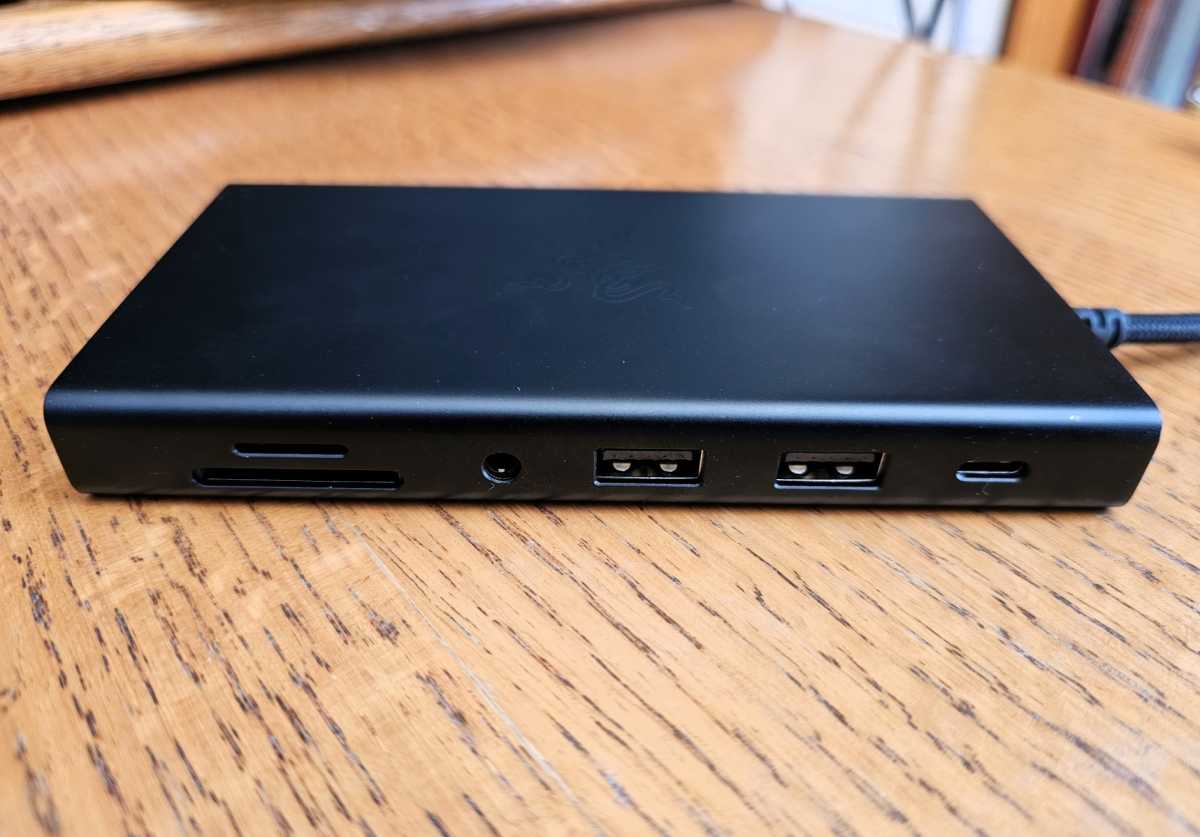
Mark Hachman / IDG
Mark Hachman / IDG
<div class="scrim" style="background-color: #fff" aria-hidden="true"></div>
</div></figure><p class="imageCredit">Mark Hachman / IDG</p></div>The dock’s features are relatively straightforward, with one exception. The dock has a 10Gbps USB-C port, along with another USB-C port specifically used for power input (100W maximum in, with a rated 85W passed along to your laptop). There are two 480Mbps USB-A ports on one side of the dock, and two 5Gbps USB 3.2 ports on the other. I prefer ports to be clearly labeled, and these are, sort of: The faster ports have green highlights. Otherwise, there are both microSD and SD card slots, rated at UHS-1 (10MB/s write) speeds. There is also a gigabit Ethernet port as well as a 3.5mm jack that can support Razer 7.1 surround sound.
You can connect the Razer USB-C Dock to your laptop via an 8-inch braided cable, which is built into the end of the dock itself.
Since you may be curious: No, there’s no RGB at all on the Razer USB-C Dock.
The Razer USB-C Dock positions itself as a sort of gamer USB-C dock, without consideration that a gamer probably would bypass this dock for something more effective. The only thing “gamer” about this dock is its price.
Where the dock differentiates itself a bit is in how it markets the final HDMI port. Normally, USB-C hub and dock vendors highlight that the ports are capable of 4K video. But since Razer caters to gamers, it notes that it can run at 4K60, but also 1440p at 144Hz (1440p/144) and also 1080p/240. The latter resolution is typically found in gaming laptops, and requires about 1.49Gbps of bandwidth — comfortably within the 10Gbps maximum of your laptop’s USB-C port. That’s a single display, of course.
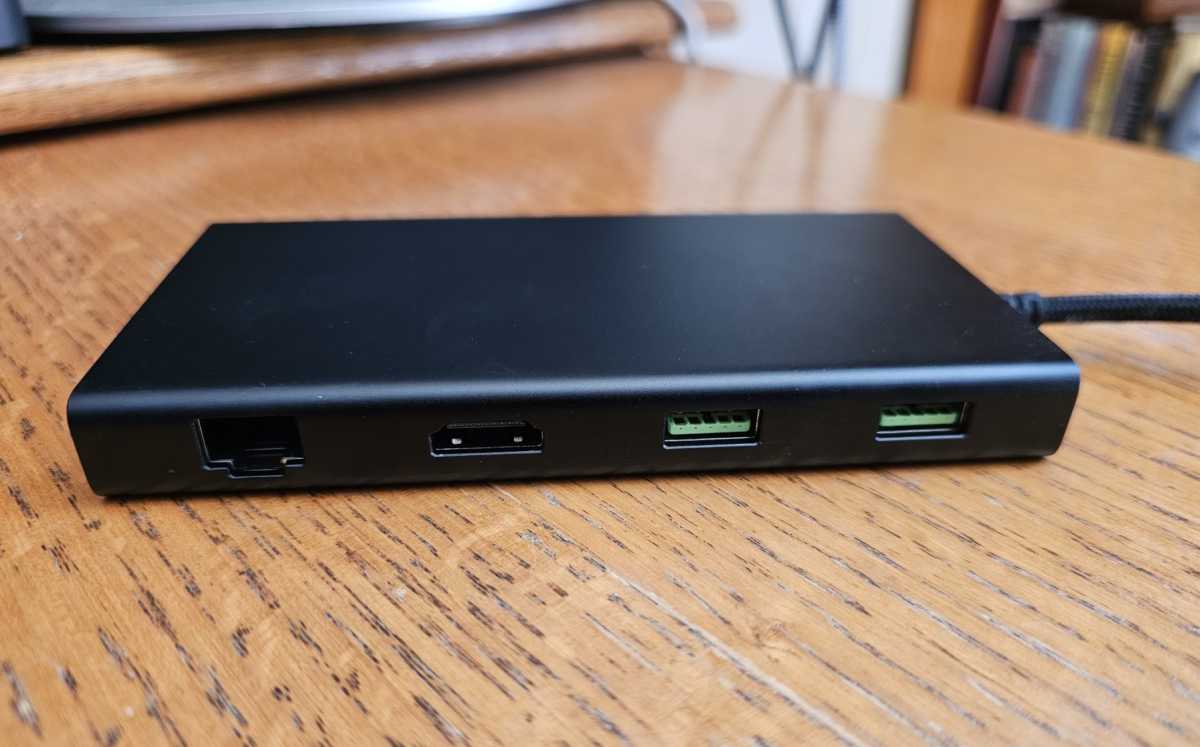
Mark Hachman / IDG
<div class="lightbox-image-container foundry-lightbox"><div class="extendedBlock-wrapper block-coreImage undefined"><figure class="wp-block-image size-large enlarged-image"><img decoding="async" data-wp-bind--src="selectors.core.image.enlargedImgSrc" data-wp-style--object-fit="selectors.core.image.lightboxObjectFit" src="" alt="Razer USB-C Dock back" class="wp-image-2404156" width="1200" height="748" loading="lazy" /><figcaption class="wp-element-caption">The rear of the Razer USB-C Dock highlights the 5Gbps USB-A ports in green, alongside the HDMI port and Ethernet connection.</figcaption></figure><p class="imageCredit">Mark Hachman / IDG</p></div> </div></figure><p class="imageCredit">Mark Hachman / IDG</p></div>Razer USB-C Dock performance
The Razer USB-C Dock didn’t quite deliver on its specifications, according to my tests. Achieving 4K60 on a single display wasn’t a problem, but I wasn’t able to push the dock past 120Hz on 1440p resolution, and it should go up to 144Hz. Likewise, I wasn’t able to achieve higher than a 120Hz frame rate at 1080p, either, when the dock is supposed to go to 240Hz at 1080p.
My test display tops out at 160Hz, so I believe my setup should have accommodated a 1440p/144 output. (To confirm, I successfully output a 1440p/144 signal using a gaming PC, directly over an HDMI connection.) However, my gaming laptop didn’t allow me to use the discrete GPU when attached to the Razer dock itself, which I suspect made a difference. On the other hand, I think most gamers will use a direct HDMI or DisplayPort cable connection from their laptop or desktop to a display…which begs the question: Then why buy this dock, anyway?
Razer’s USB-C Dock did put out a decent amount of power from the USB-C port: 6.3W, which is enough to fast-charge a phone but without the specialized high-speed connections that some phones use. The USB-A port produced 2.4W, which is very little. I measured the dock passing 74W to my laptop at a rated 85W, which was a little less than I would hope for and caused my laptop to complain of a weak charging state.
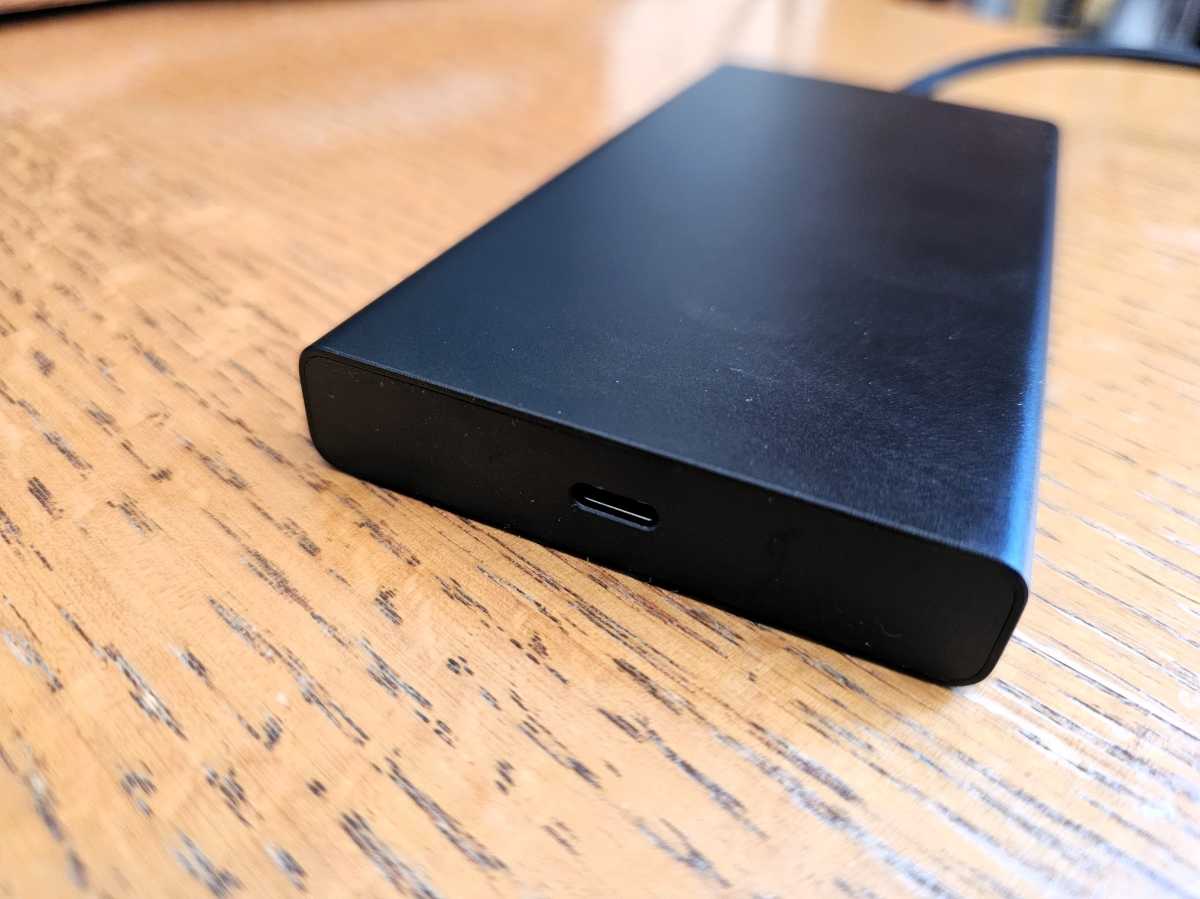
Login to add comment
Other posts in this group

Finding the best gaming laptop at the cheapest price can be difficult
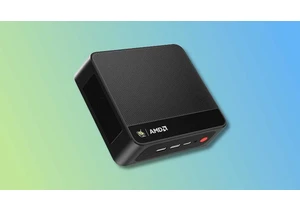
If you’re thinking of buying a laptop, maybe consider a mini PC inste

Have you heard this one before? A scrappy entertainment company launc

Although support for Windows 10 will not end in October 2025 after al
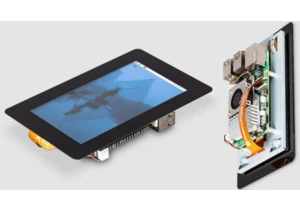
This weekend, a friend of mine showed off their RetroPi setup along w
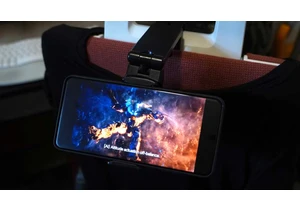
Traveling is a true joy, but only when you’re at your destination.

If you’re a Gmail user, you need to be particularly careful right now
